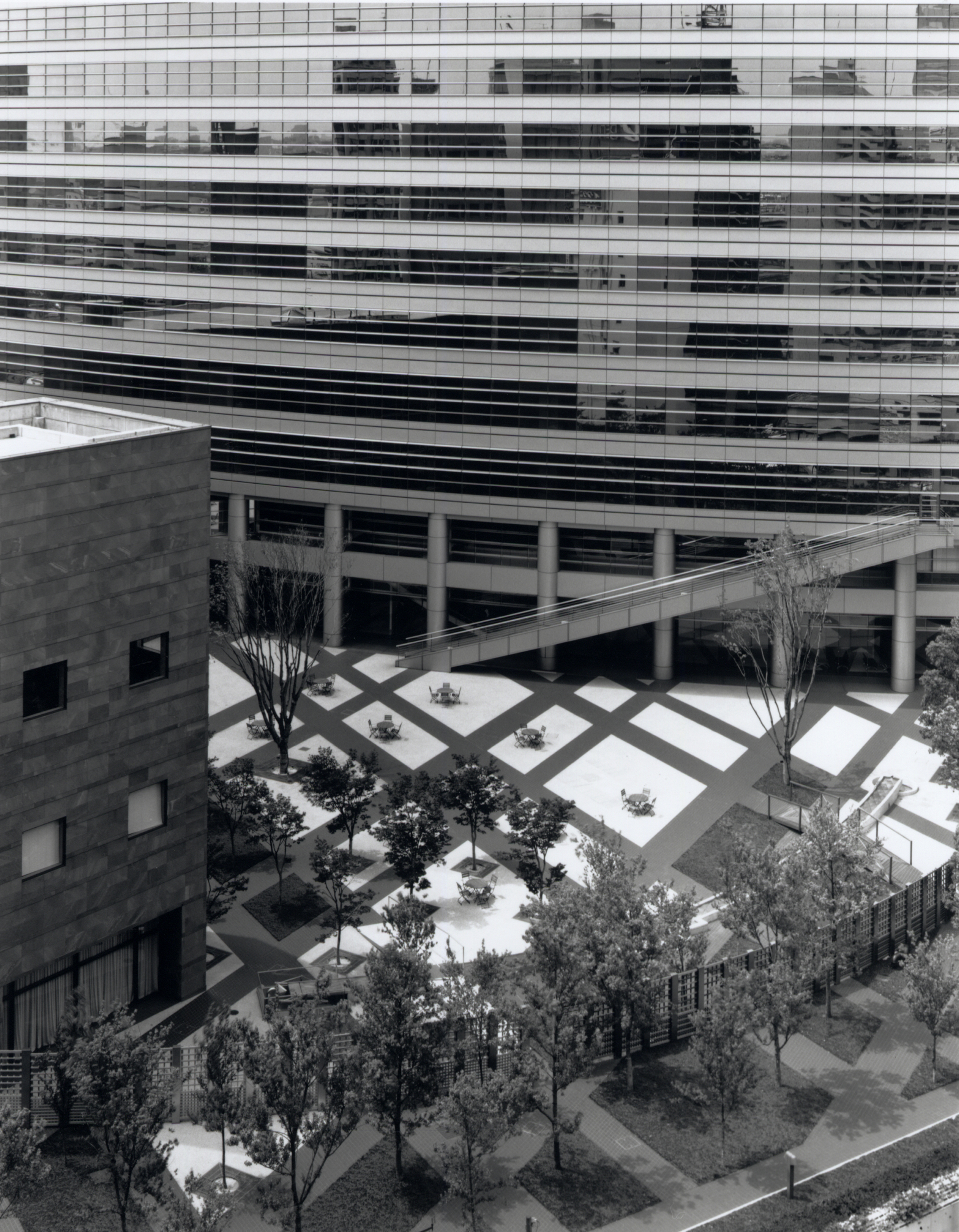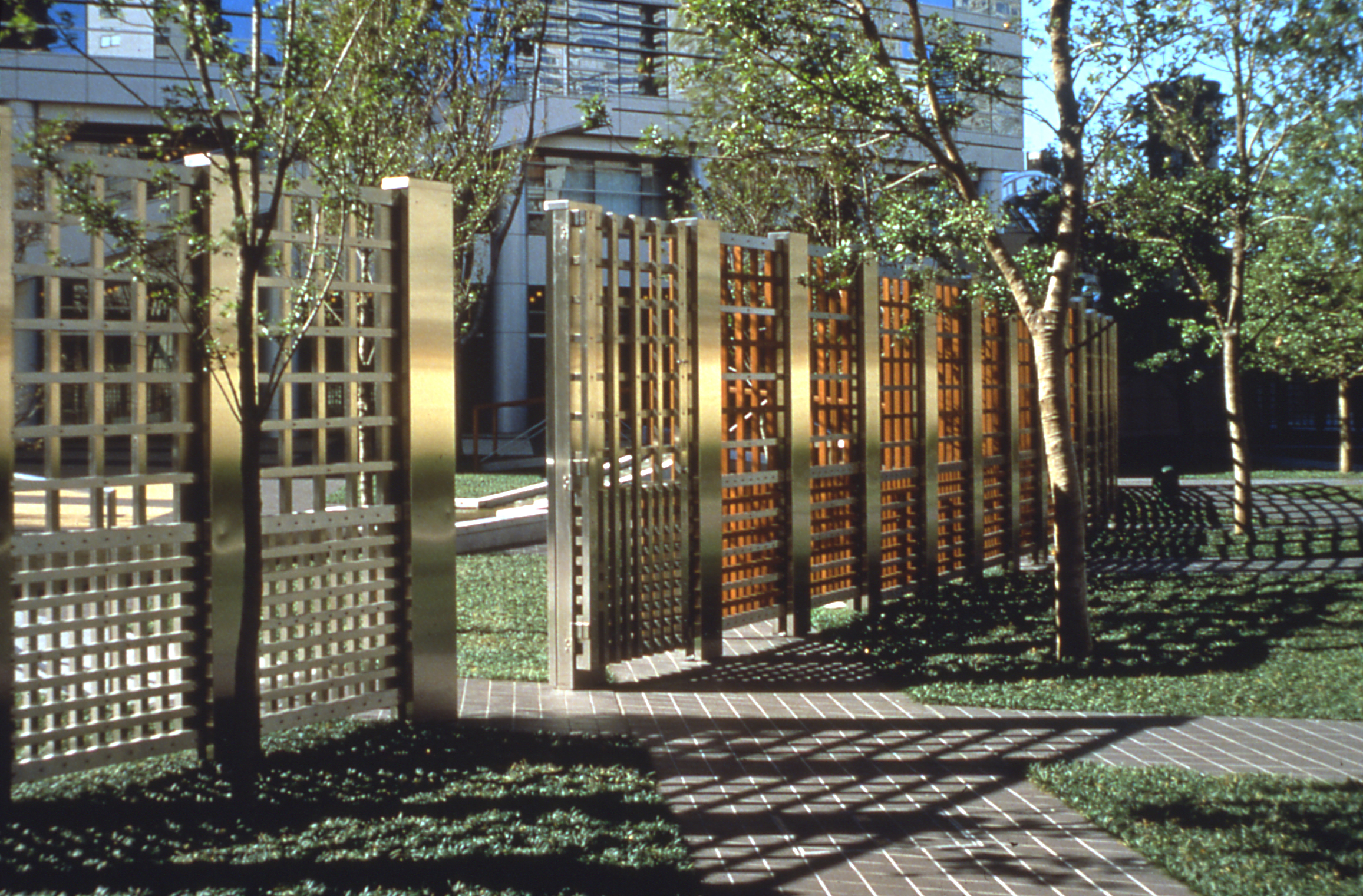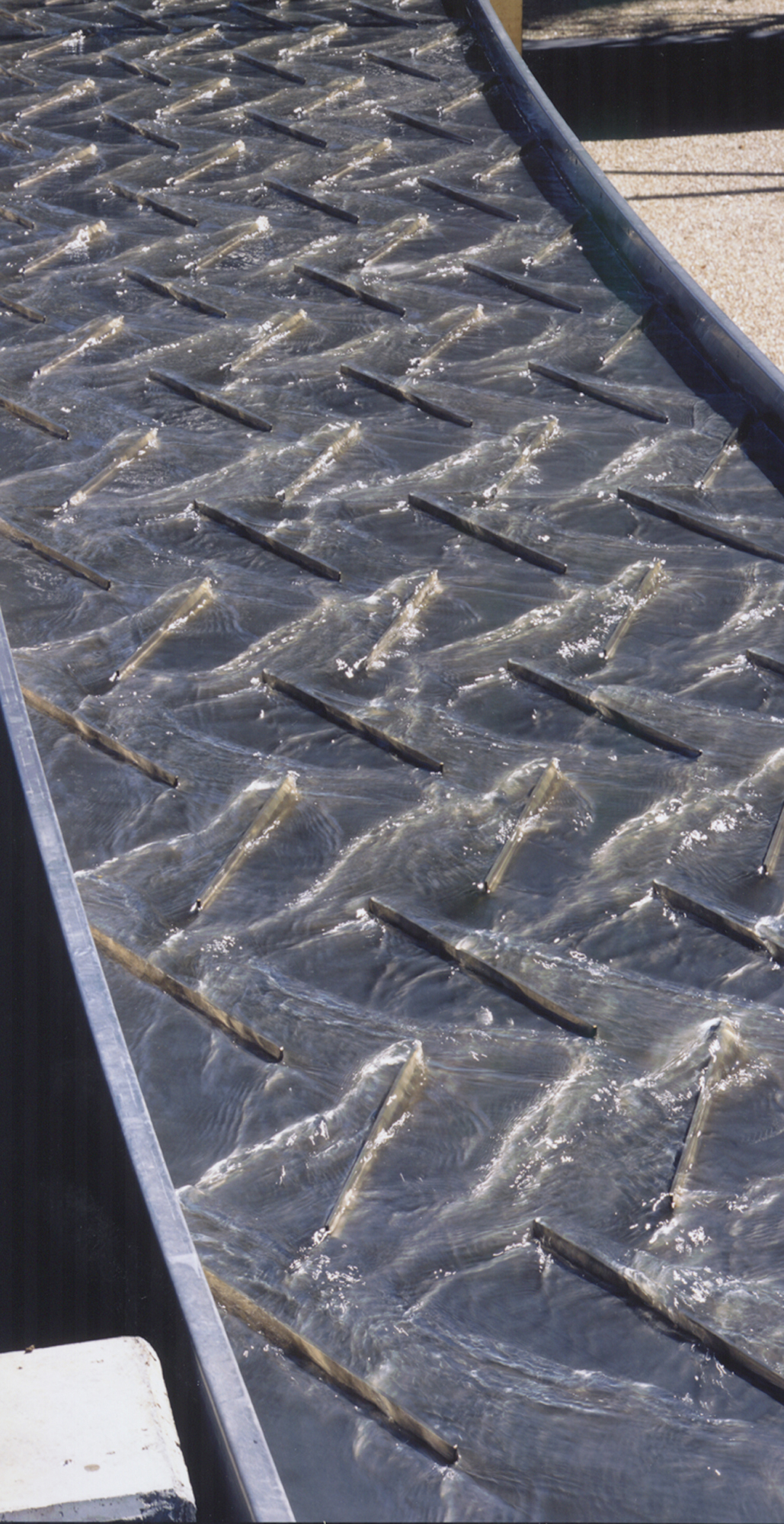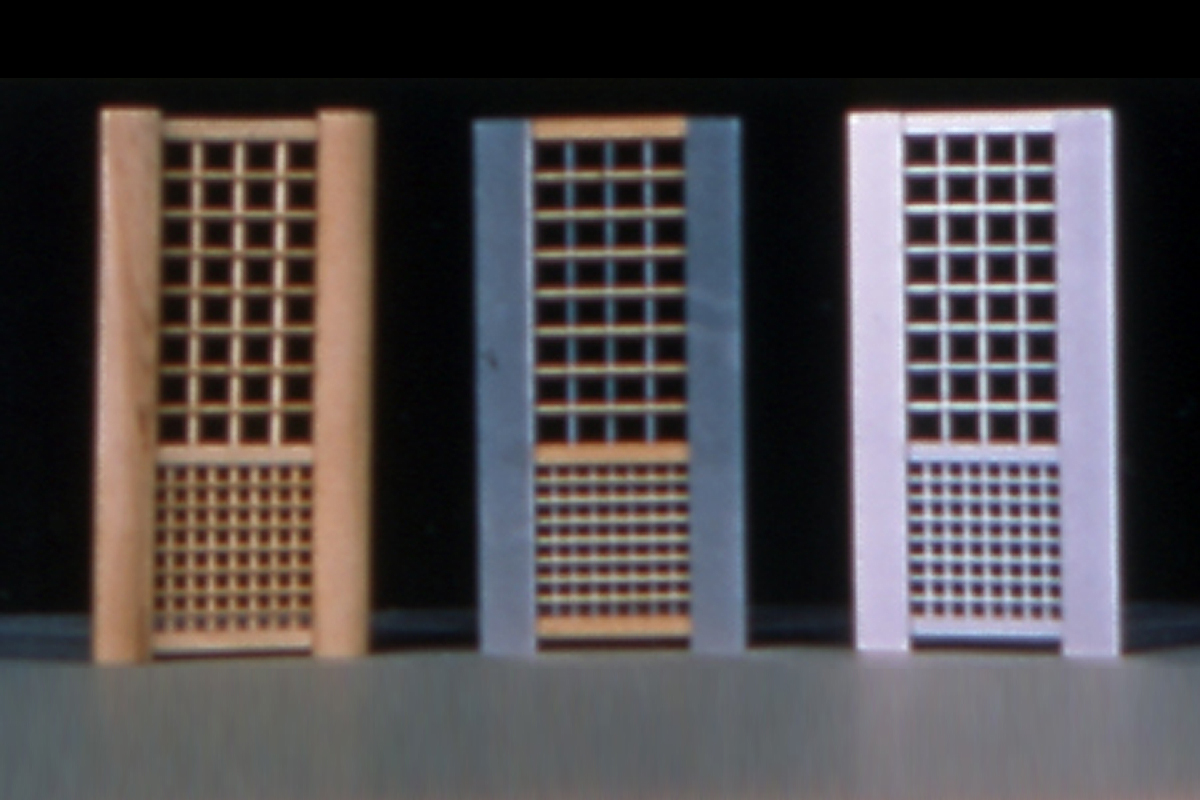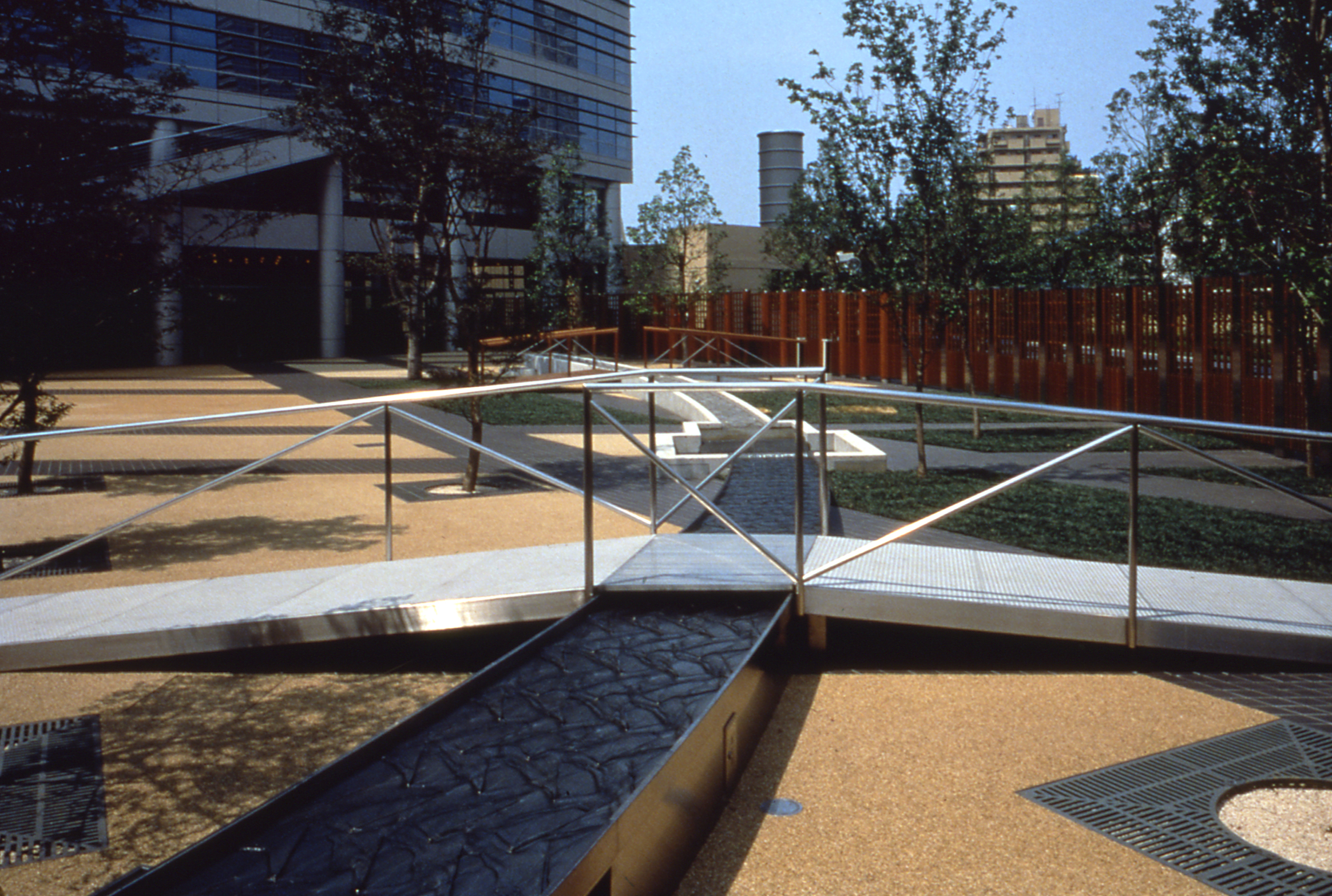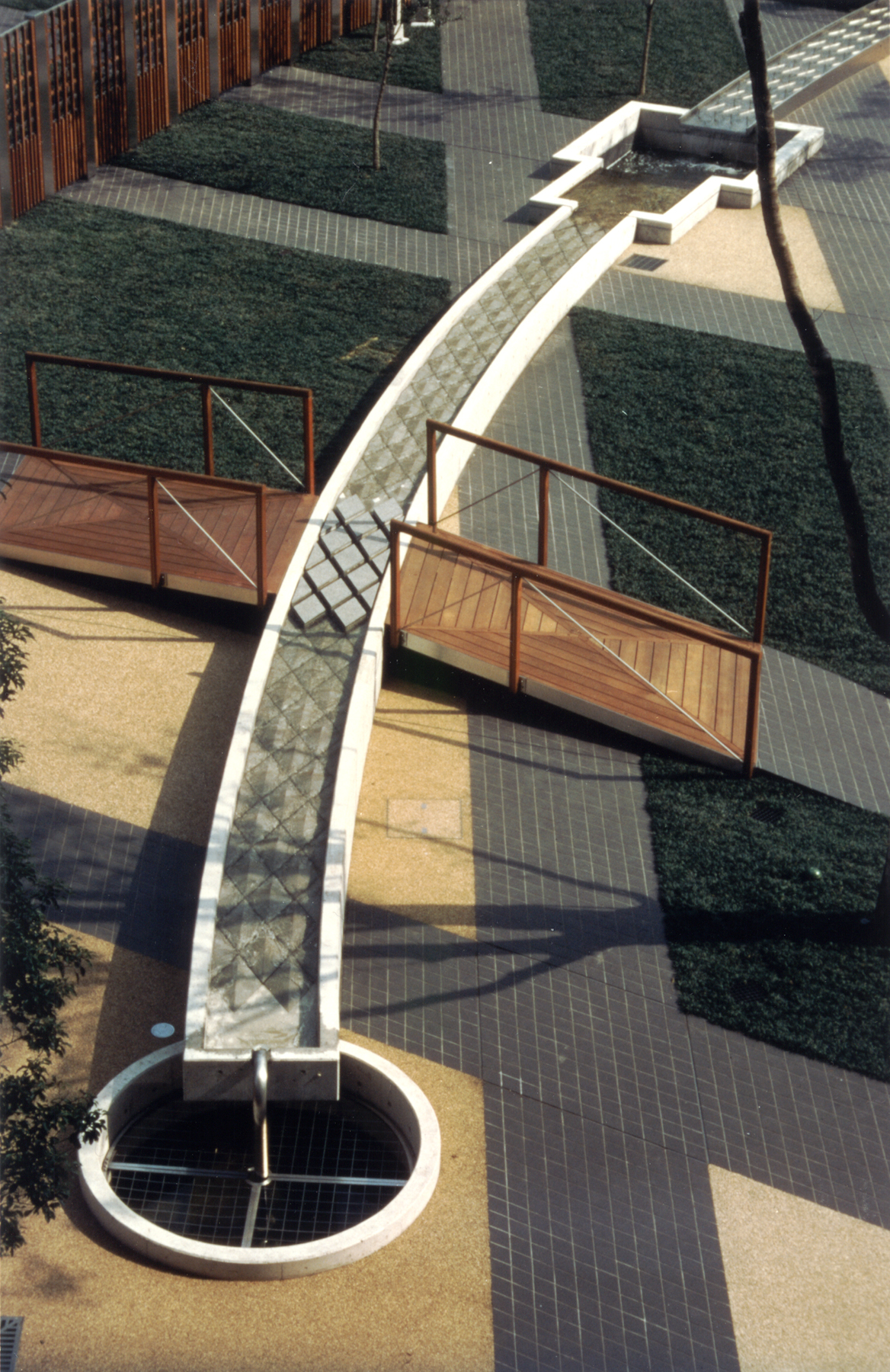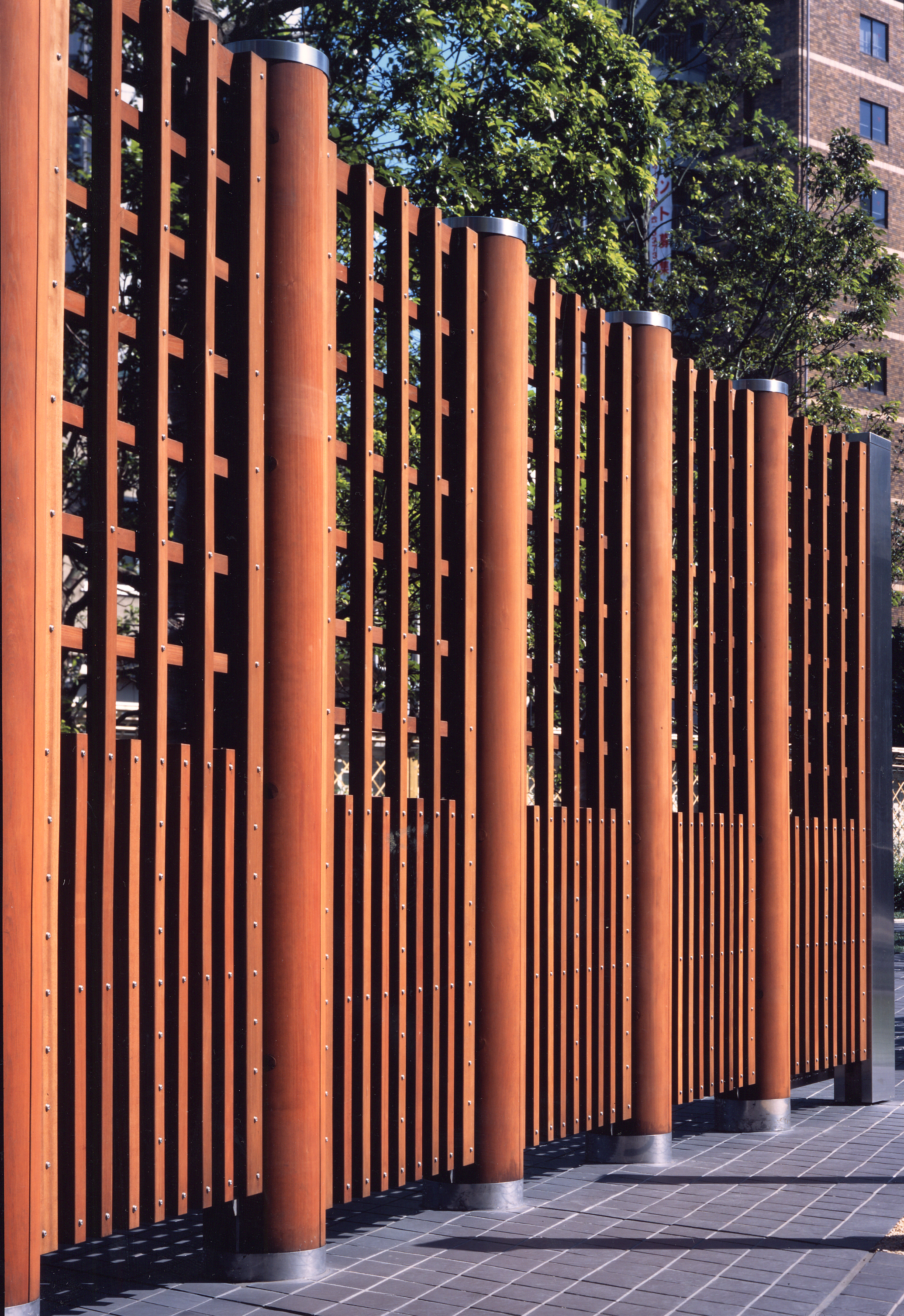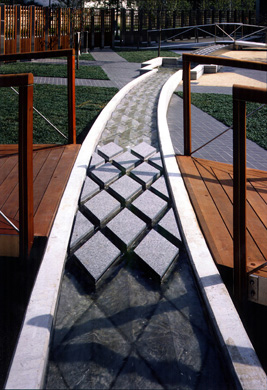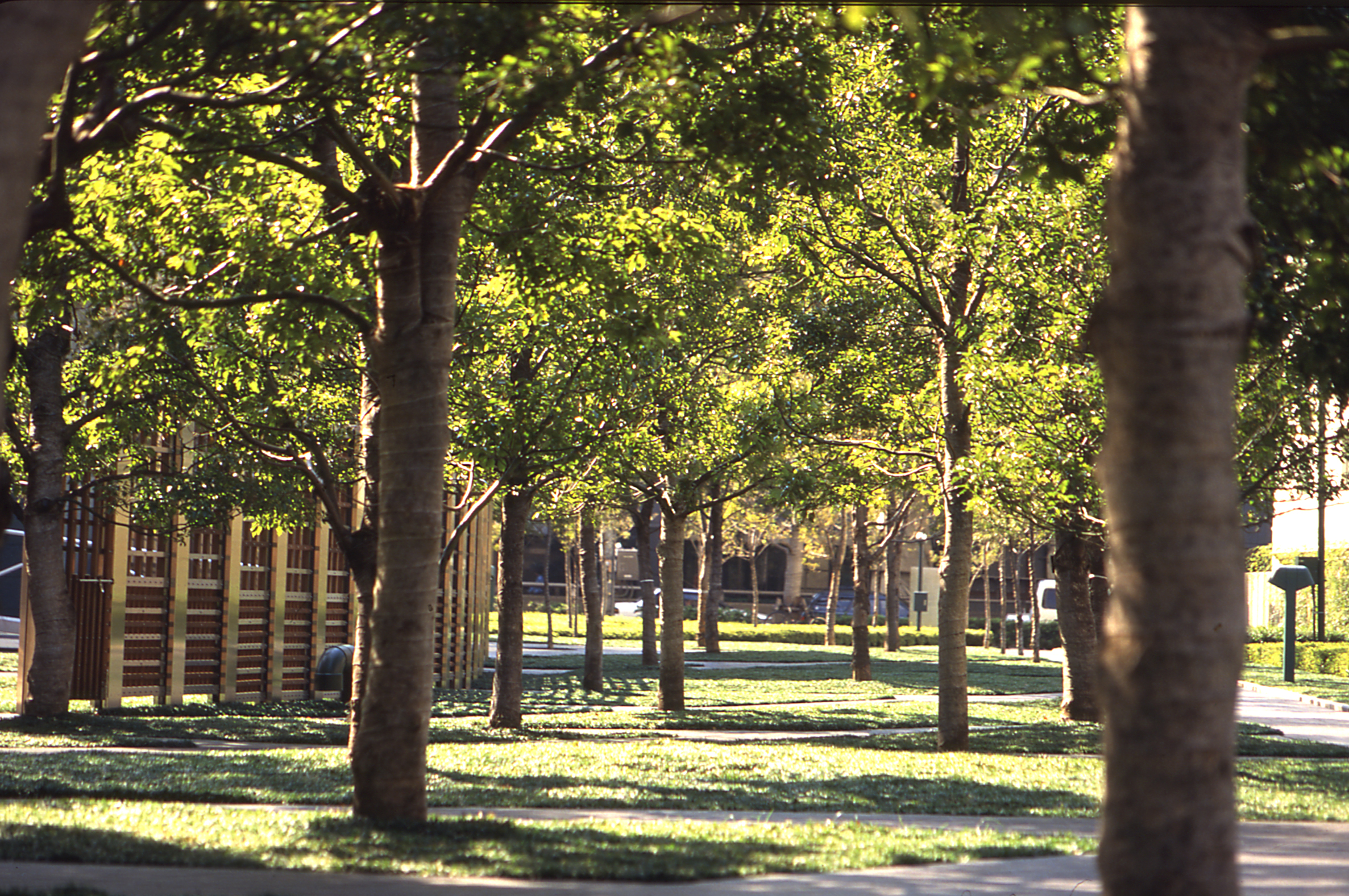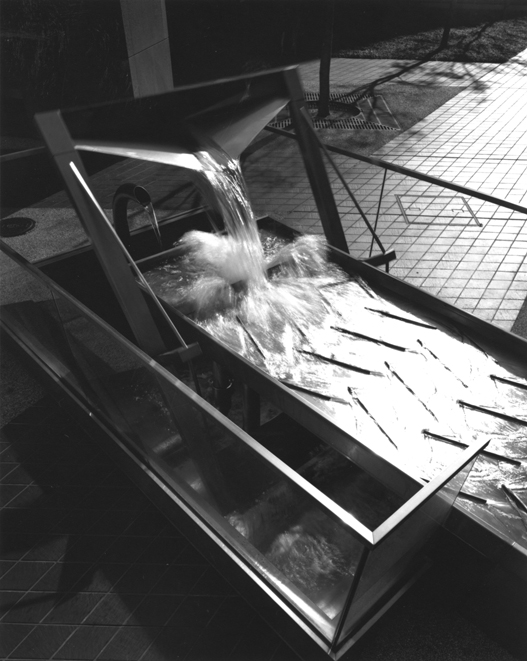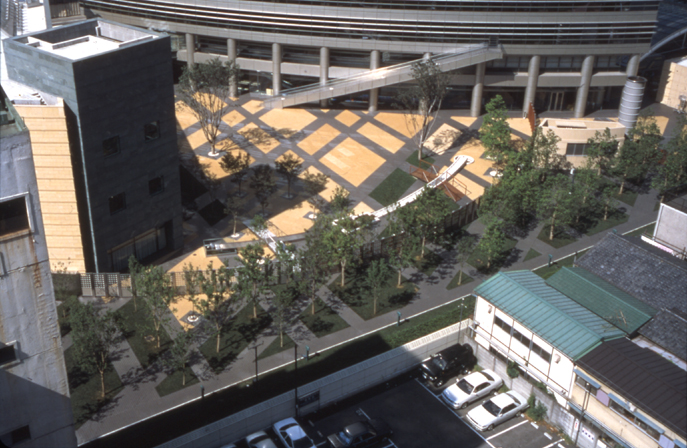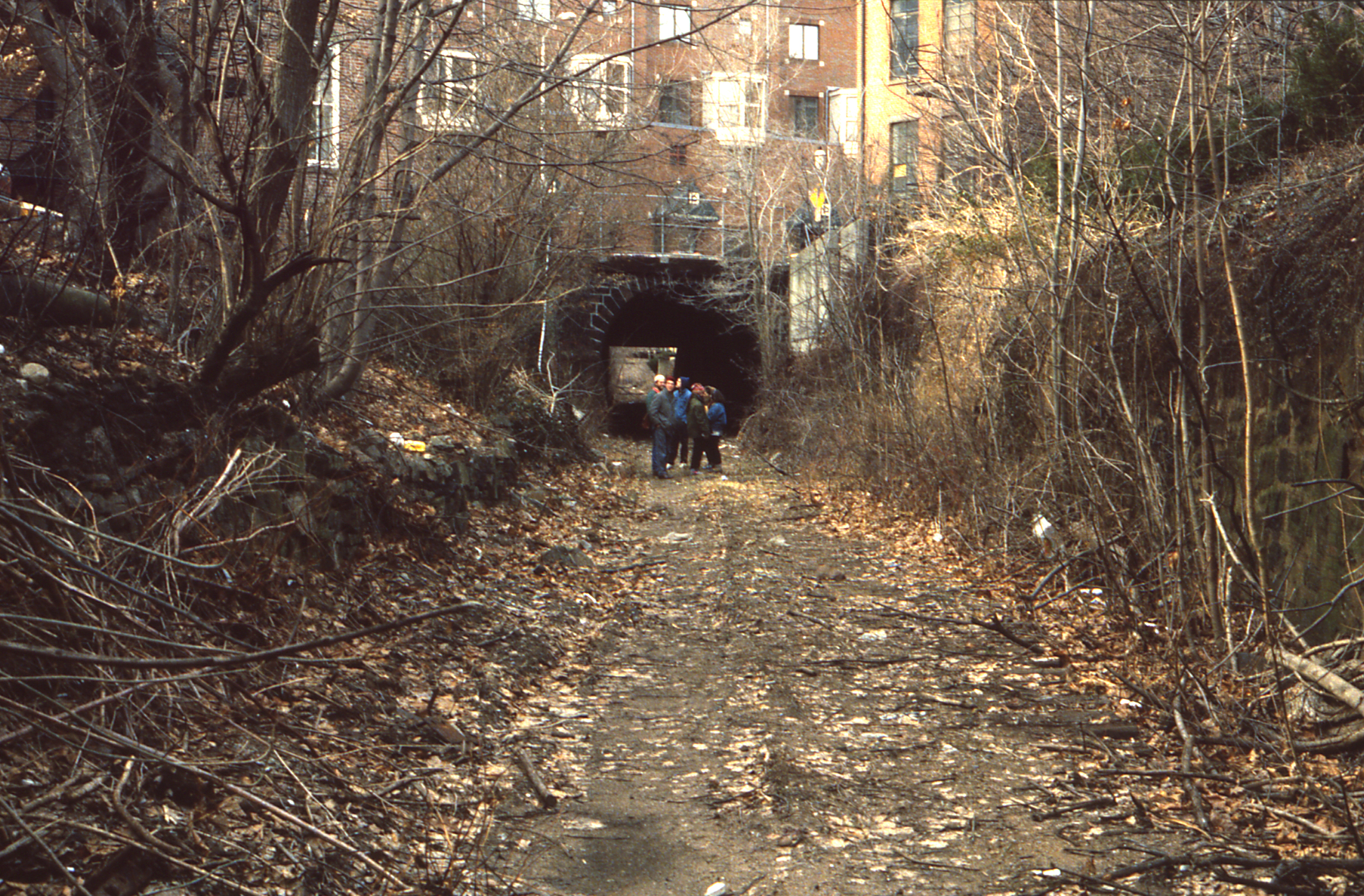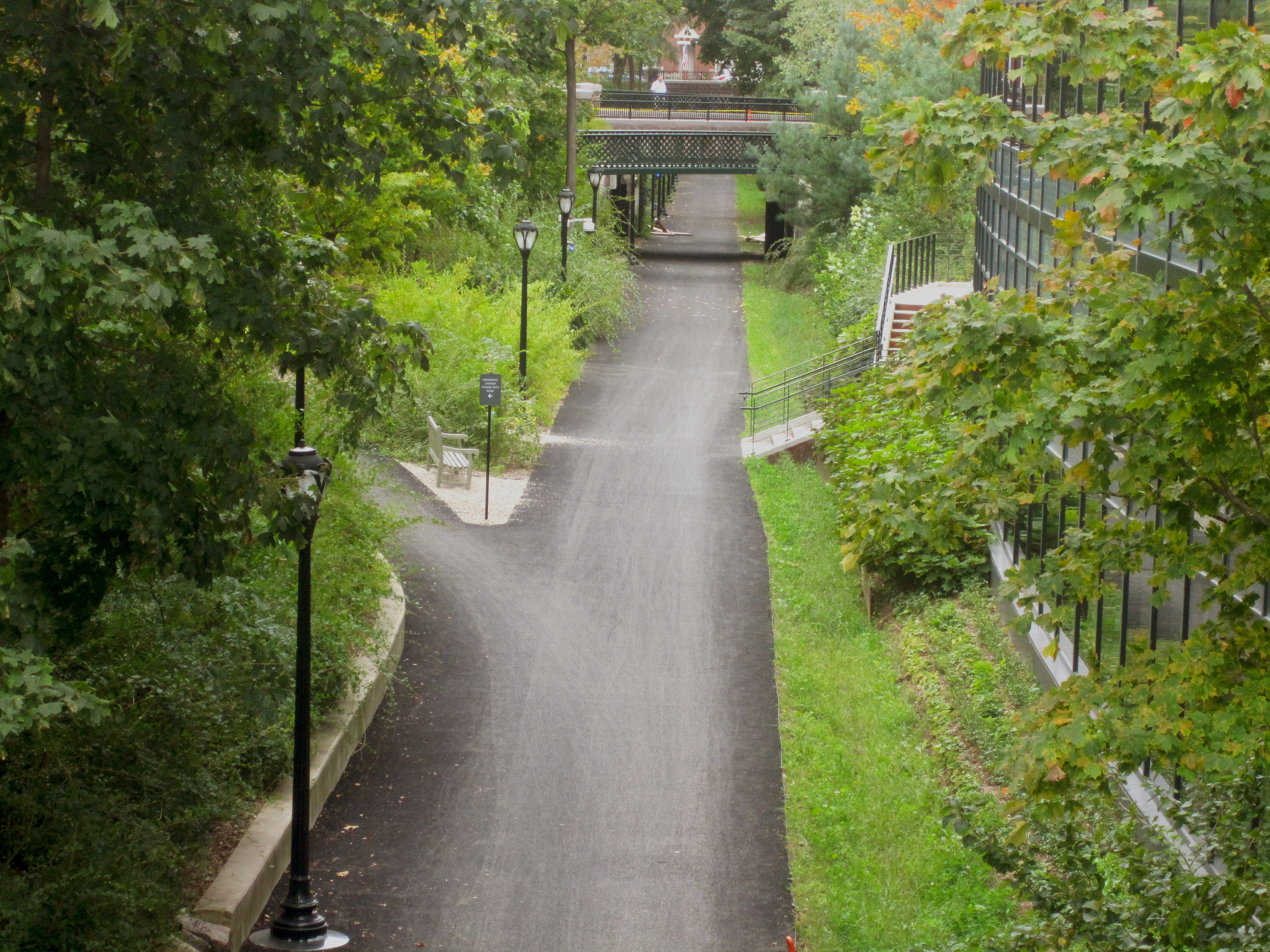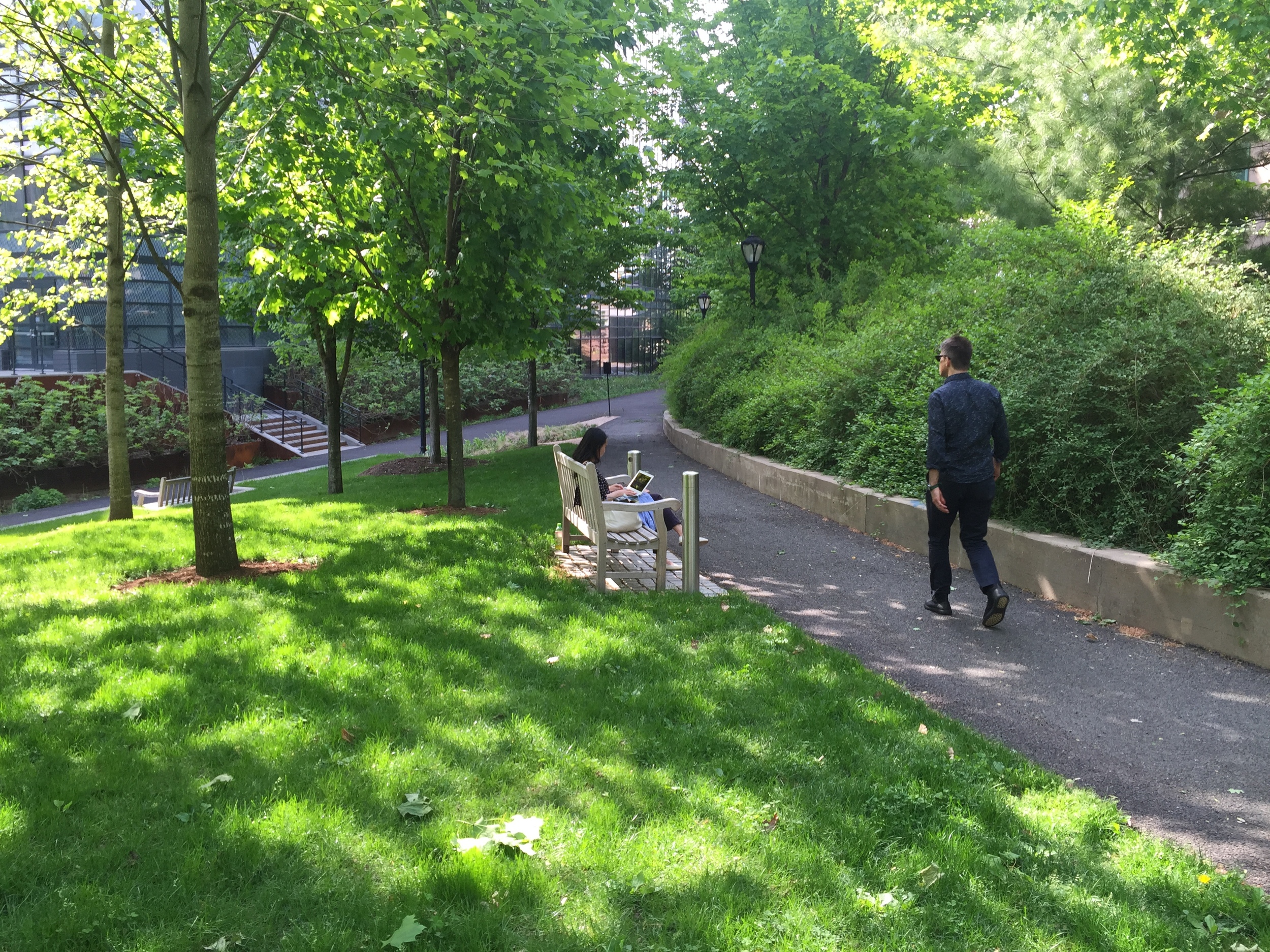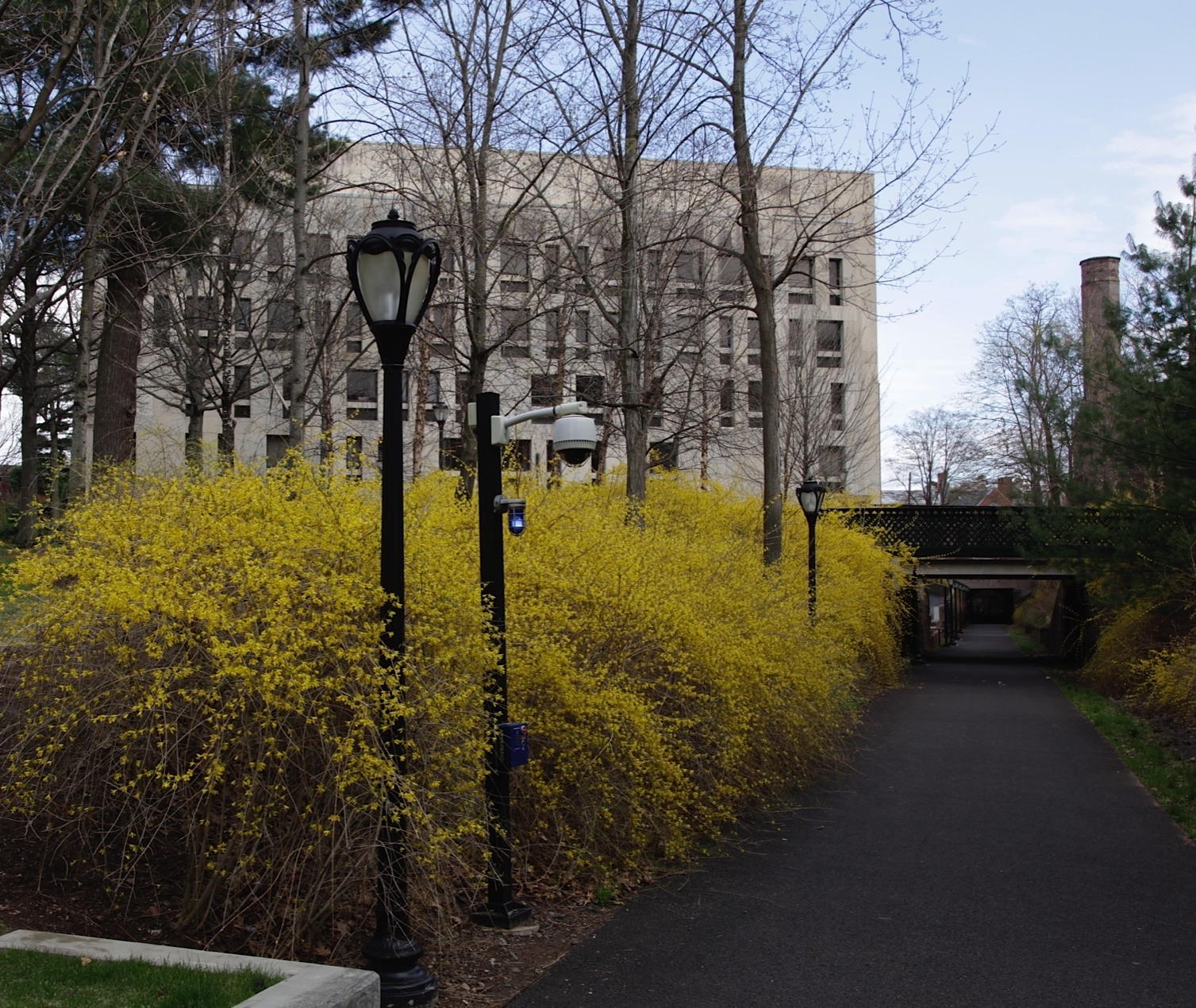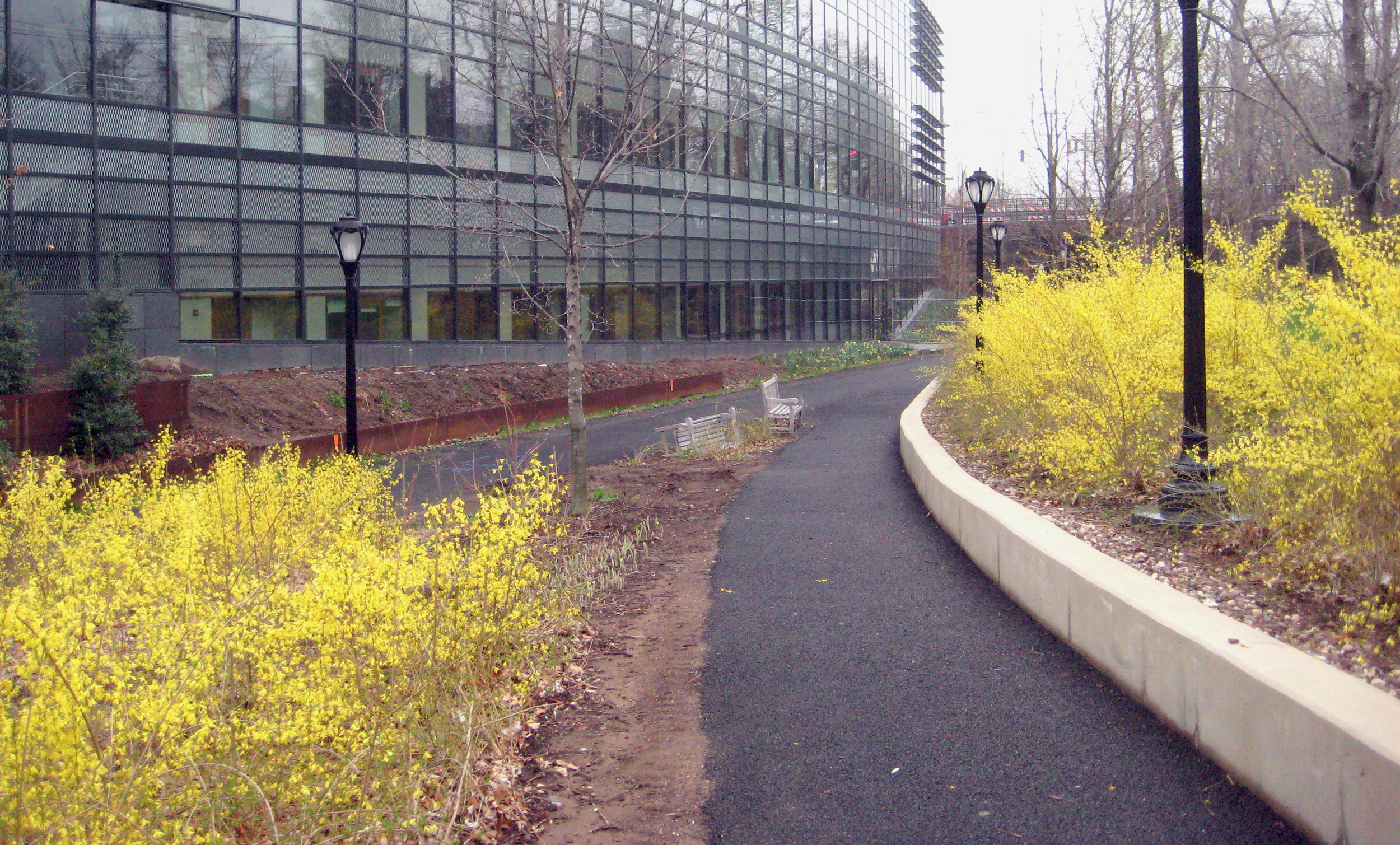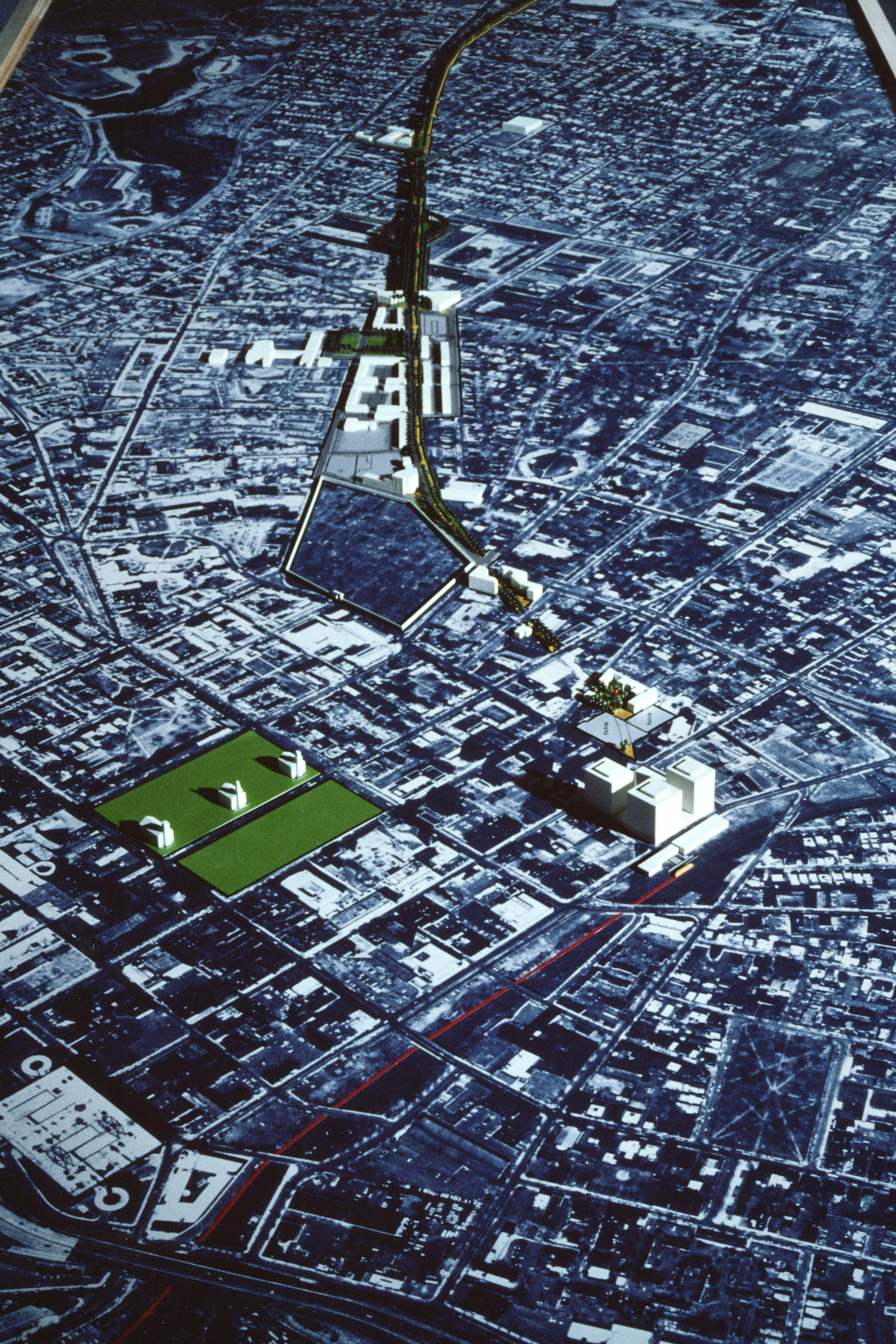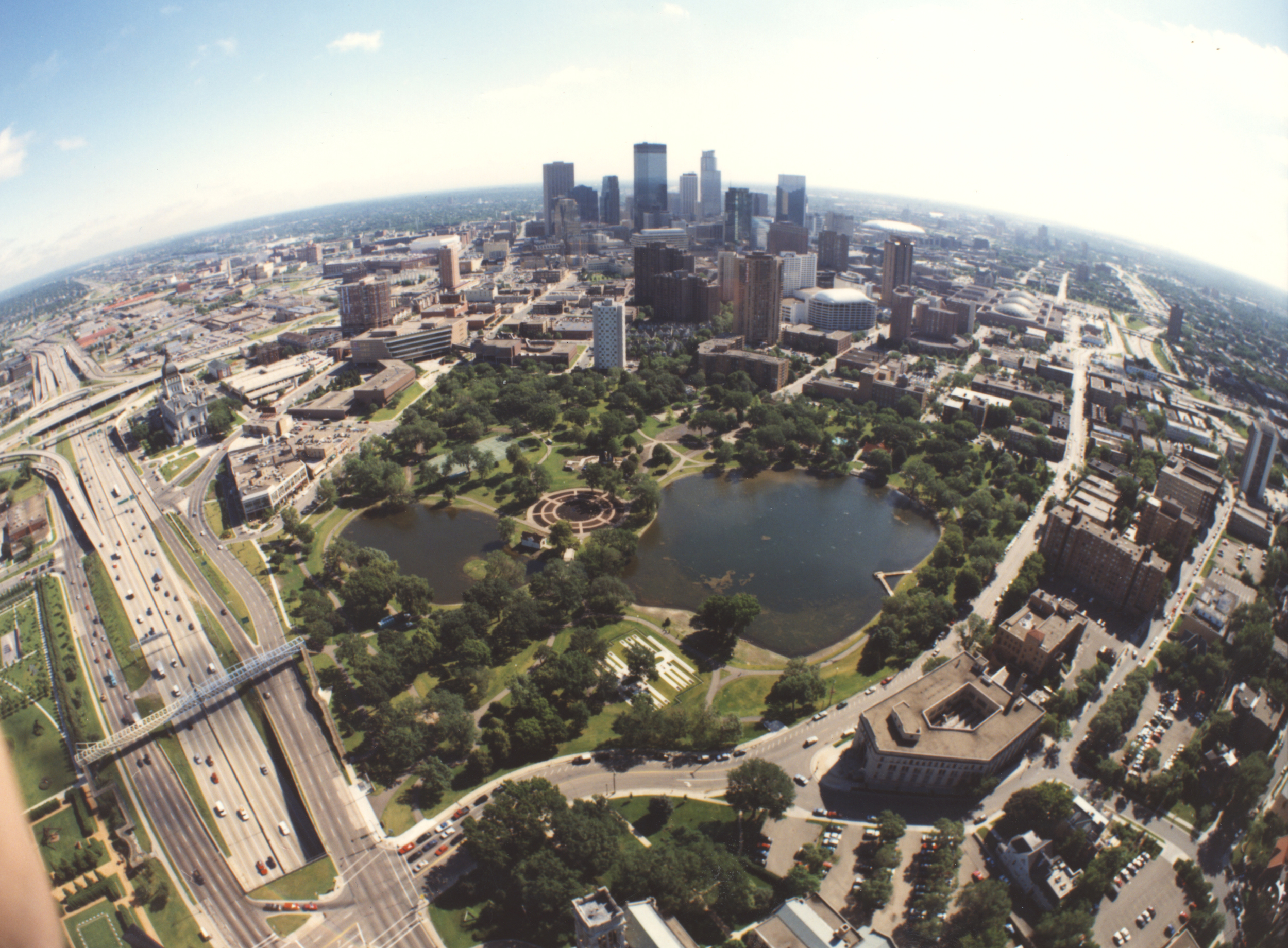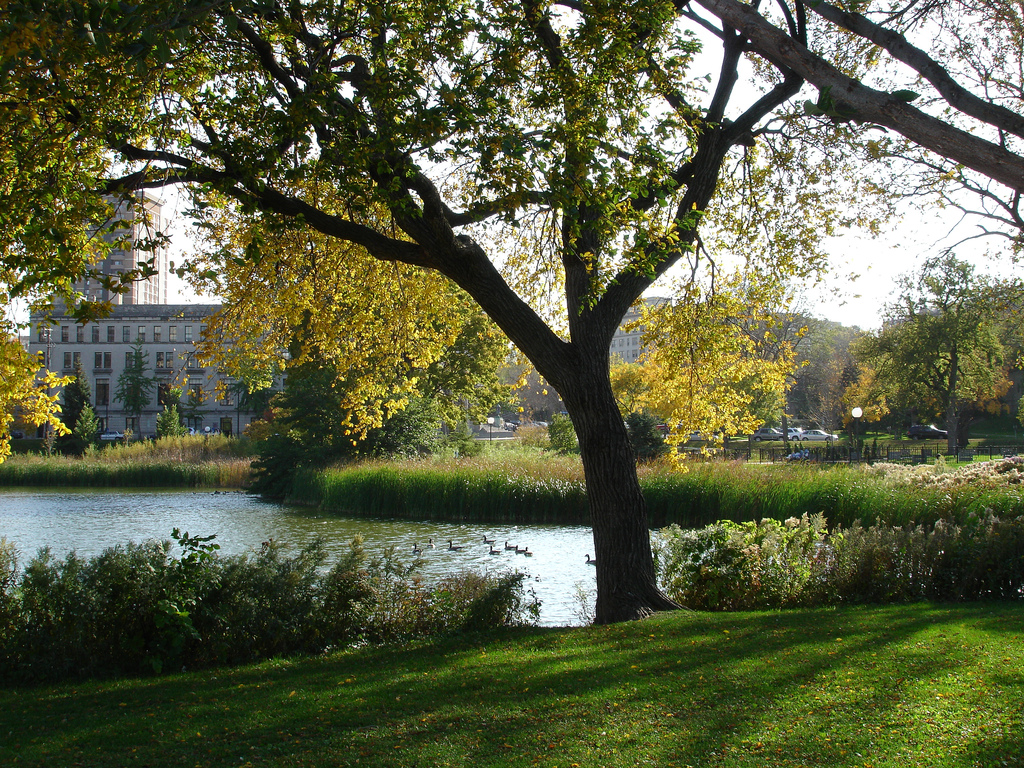1995 - TOYKO, JAPAN
NTT SHINJUKU HEADQUARTERS BUILDING
TOYKO, JAPAN
CLIENT Nippon Telephone, Telegraph Headquarters / STATUS Completed 1995 / SIZE 78,899 SF / DESIGN TEAM Balmori Associates / Pelli Clarke Pelli Architects
This design of this project is all about the relationship between nature and artifice. This is sought through the use of different materials. The plaza, bisected by a fence, is completely public except for a few occasional private fairs hosted on a monthly basis when the fence is closed off. The fence dividing the plaza begins as a wooden structure; gradually stainless steel members are added, mingling with the wood, increasing in number until the fence is entirely of stainless steel, moving from natural to more artificial materials.
The fountain rill, powered by a windmill, moves water over a patterned bed of concrete on one side to stainless steel on the other based on hydrological patterns from riverbeds. Two bridges are added to the design, one of steel, and one of wood. Stone-tile paths with planted and gravel surfaces let the rain seep in to ground water or to collection points for cleaning and reuse.

